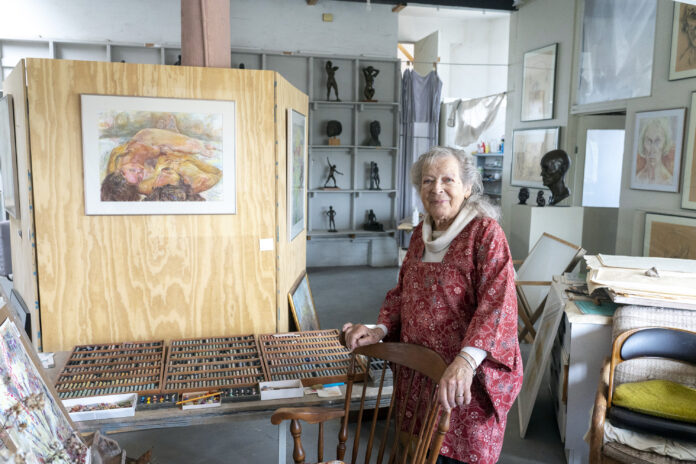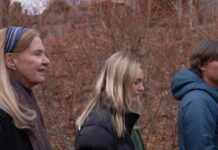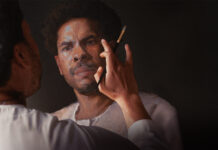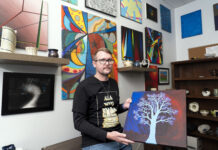In a conversation about life, artist Ruth Holland Waddell offered this: “Every age has its wisdom,” she said. “You have the wisdom of your age; I have the wisdom of my age. It’s all relative. In other words, if you say something I hadn’t thought of, I’ll think you’re wise. And if I say something you hadn’t thought of, you’ll think I’m wise.”
At 97 years old — her birthday is Wednesday, Nov. 23 — Waddell engaged in a discussion about her life, her art, her marriage and her ability to live in the moment, as well as her beliefs about expectations.
She shared her truth, her philosophy on the choices she made and the story of her partnership with her late husband John Henry Waddell [1921-2019], a sculptor, painter and art educator.
“We’re two different people, we have different lives. There are different needs or expectations, and so on,” Ruth explained. “But expectations are an interesting aspect of life, especially in our culture, where marriage is so, come and go, come and go. And it has partly, I think, to do with expectations. When people fall in love with each other, they get to think they’re identical twins. They emphasize and focus on the things they share, the places where they’re alike. And I think maybe each one assumes that the expectations that they have, are the same as the expectations that their partner has. And then the rest of life is finding out how that isn’t true,” she said. “But then, the other part of it, of course, is the expectation of knowing that you’re going to deal with whatever it is because you’ve made a vow of lifetime, that you really meant.”
Ruth met John at the Chicago Art Institute. She became his muse in art and thereafter his wife — they married in 1949. The Waddells lived in Greece and Mexico before moving to Arizona. Throughout that time, their partnership was unconventional, and just like
any relationship, endured bumps. However, they stayed true to their commitment to one another.
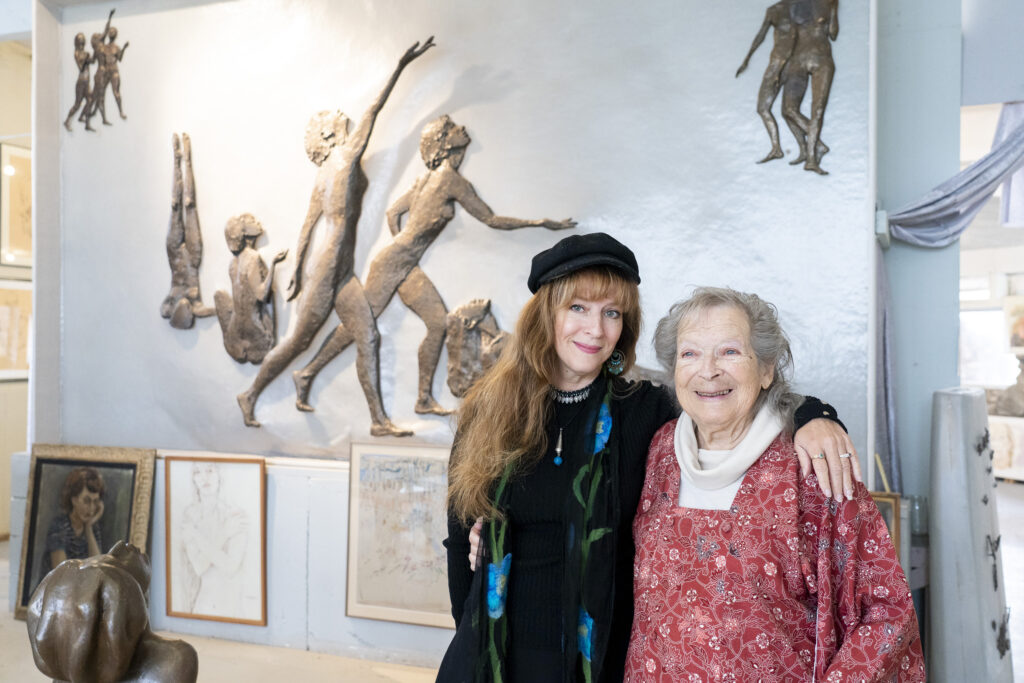
In a film produced and directed by their daughter Amy Waddell, “The Reluctant Muse” [1999], Ruth Waddell noted, “I
know that I personally had eyes for other people. Dad had eyes for other people. We have never closed our eyes. I never assumed anything. I never assumed monogamy although I certainly appreciate some kind of fidelity in the relationship.”
“Now that means in the relationship itself, that doesn’t mean that one doesn’t look elsewhere or do elsewhere,” Ruth said. “It means that there’s a kind of faithfulness to what you have within the relationship. You can’t be fixed. You can’t make something static. Because life isn’t that way anyway.”
Amy said she made the film because she was looking for answers. She wanted to know why her mother stopped working as an artist and supported her father’s career instead of nourishing her own.
“I was telling a story from the point of view of a daughter searching for answers — a daughter who’s also in the footsteps of my parents int he creative way,” Amy said. “I was looking for answers about how not to fall into certain traps; how to learn from their wisdom; how best to learn from their experience.” “My experience, as their kid, had been great,” she said. “I was raised with 50 different apprentices at different times — there were different apprentices living with us, not all at the same time. So, a lot of creative people, a lot of drama. But you know, there was dance, and there was music. People came from all over the world.
And my parents were very supportive of whatever I wanted to follow; same with my brothers. I had a good experience with them.”
“Because my mom was not doing her own work, I really wanted to get in there and understand why she had stopped being an artist because I certainly didn’t want to fall into whatever trap she may have fallen into,” she said.
The Waddells created an enclave for artists, dancers, musicians, apprentices who lived and worked at the studio. “John very much advocated the aspiring artist experience, getting to see the whole of the artist’s life,” Ruth said. “From his point of view, it was all related to the work — everything he did and everything he had to do. There would be whole groups of art students who would come and work here and camp out at night, by the creek. But the concept of having the artists coming into the artist studio and witnessing their life became paramount.”
Ruth also spoke about the choices she made, “considering the whole of who I am. That’s spelled ‘w-h-o-l-e.’ I don’t because I was drawn to John,” she replied, “So, considering that I was drawn to this person who needed me in a certain way, who needed to have somebody there, to round out his needs, and his needs were strong and imperious as a person, as an artist, as a man.” “So, when you look at the whole of
who I am, and who I was in my life, it all works,” Ruth said.
“One of the things that surprised me was that my mom was not talking like a victim at all. She was talking about the choice she had made to stop her work and to focus on her family, and on my father’s career and on the school that they had opened in Sedona,” Amy said. “That was her choice to do that. And she was owning that.” “‘Can a woman go out there and survive as an artist?’ To which Ruth replied, ‘The only way to know is to go out there and do it. Do your own path,’” Amy said. “You know, my path is my path. Yours is your path.”
Amy said that she saw her mother as “a victim of the times when women gave up their work. She didn’t see herself that way or she didn’t put herself forward that way. That was one thing that was a surprise.” “I think the other surprise was that there was some sadness in my dad about my mom not having continued her work,” Amy said. “He knew that she’s bright and talented — that was interesting to see as well, she said.”
Ruth, described as her husband’s muse, was only reluctant about one thing. “I think as far as how I felt about or feel about posing for him, through time it’s gone through the gamut of feelings of being honored or flattered that he wanted to paint me probably from the very beginning, enjoying seeing some of the love in some of his paintings, enjoying seeing whatever depictions he did of me to later, resenting that I would be asked, with what seemed to be no regard for whatever I had in mind to do myself, to stand there was, like, a feeling of being frozen,” Ruth said. “I didn’t think of being frozen but being asked to stand still, and not wanting to stand still.” “In his last years, after he had lost a lot of his ability to work — because the work that he did required so much mental, physical, spiritual, you name it,” Ruth said. “He liked working large and working beyond one’s ability. That was almost a trademark of John, always taking on things that were beyond what was possible. But then, in the very later years, he would often bring up things about the past and want to talk about that. I was impatient with that.”
In making the film, Amy said she learned about the significance of their love story. “They were massively in love with each other,” she said. “Those last years, when my dad had stopped going up to the studio, my mom would say, ‘I just keep turning around and he’s right there.’ You know, he just followed her everywhere.” “He would just stare at her in this kind of adoring way,” Amy said. “They completely loved each other. They celebrated their 70th anniversary right before he died.”
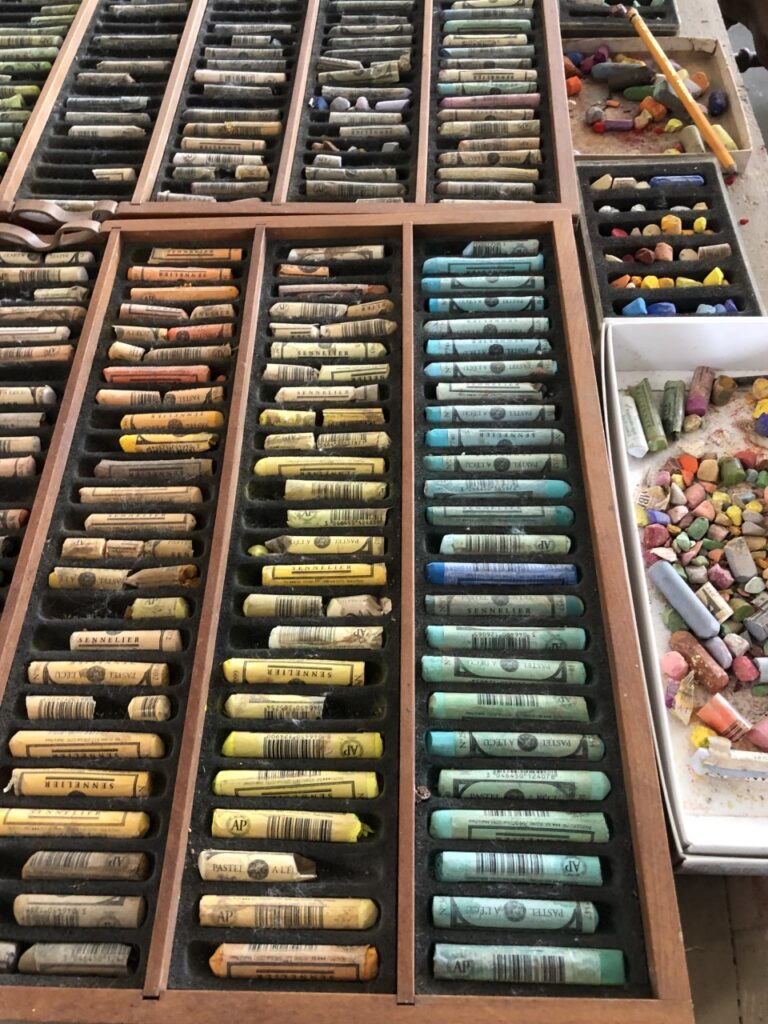
Ruth returned to creating art later in life. She works mostly in pastels, a medium she enjoys because of its fluidness. She describes a time going down to Oak Creek, close to her home, to paint. “I was going down near the creek to work in nature,” she said. “Something would catch my attention visually because I had an emotional response to it. And that gave me energy. I think that’s my own interpretation.”
“In the process of painting, I saw more and more,” she said. “I saw more color that I didn’t see right off. But as I worked with it, I kept seeing more. So, for me, that was an enriching experience.”
“Now, I started out looking at flowers, but now I’m looking directly at the work itself,” she said. “It’s the same process, though. I’m seeing more and more and more and more … I’ve had people respond to it. And that’s all very nice. But I’m responding at another level at this point.”
John Waddell was known for his work in figurative sculptures, working with nude models throughout his career. For 13 years, he immersed himself in creating “Rising,” a monumental 30-piece bronze relief wall sculpture replicating models dancing, jumping, floating as they rise into the ether. That sculpture now resides in the Waddell Studio that they built in Cornville.
Waddell’s life and work became the subject of a film, “Rising,” produced by Marlo Bendau in 2010. Bendau was a
family friend, artist and mentor to Amy, who assisted in the film.
The award-winning documentary takes viewers behind the scenes and into the Waddell studio to offer a peek into the trials and tribulations of creating a masterful work of art. “Rising” was screened Mary D. Fisher Theatre on Nov. 11.
When asked about lessons learned or favorite memories that occurred in her life, Ruth responded, “One thing that I’ve learned recently, and a bit to be aware of, is gratitude.” “I’m grateful that I get up in the morning. I’m grateful that I can put my clothes on, I’m grateful that I can get my breakfast. I mean, you name it. I am grateful now that I could do it.” “There are many moments [in my life, but I don’t think about them] that way,” Ruth said. “I’m in the moment. That doesn’t mean I don’t have memories or think about yesterday or tomorrow. But I like to be in the moment. Where else should we be?”
















